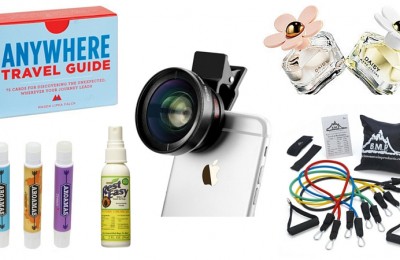Lots of students who study abroad decide to start a travel blog. I highly recommend it– it’s a great idea for so many reasons. It’s a place to record all of your adventures just after they happen, it’s a fun way to keep your family and friends updated on all of the cool things you’ve been doing, and can even be used as a portfolio for your writing or photography once you get home.
If you want to start a blog for your study abroad semester but don’t know how to, I’ll tell you how to get a blog up and running– it’s pretty easy with this guide.
*This post contains some affiliate links (this doesn’t affect the price you pay).
1. Choose a name for your study abroad blog
What do you want your blog to be called? You could just call it your name, or you can get creative and choose something different and unique. Do a brainstorm of what you might like to call it and write your blog title ideas down. Once you’ve narrowed your options down to a few, you’ll want to do the following:
• See if the URL is already taken. Even if you’re not planning on getting a custom URL, you will need to be careful that you don’t have the same name as another blog or brand.
• Write the name out as one word to make sure you don’t end up with something inappropriate or strange, like WhoRepresents . com….
• Check on social media to see if the corresponding handles have already been taken.
Pin this, then keep reading…
2. Choose a platform for your study abroad blog
There are two different platforms that I recommend someone who’s just starting out with blogging to use.
WordPress.com is free, simple to use and fairly easy to set up. Once you choose a free theme and watch some tutorials on how to get it set up, you’ll be creating content for your study abroad blog quickly and easily.
Self-hosted WordPress isn’t free, so you’d need to buy hosting and a domain name (which we’ll get into in a bit.) The upside is that you have so much more functionality than the first option. This means you can add some useful plug-ins on the sidebar, create posts that are more likely to show up in Google, and literally a MILLION other things.
It’s not as easy to use as the free version of WordPress, but if you get stuck there’s already a Youtube video out there showing you literally how to do anything you could possibly want with your site. The Abroad Guide and my other site Love and London are both on self-hosted WordPress, and if you’re thinking you might want to continue blogging once you’re home or would like to use your blog as a portfolio for your photography, writing, or social media skills, it’s worth the investment.
I’ve used GoDaddy for years and highly recommend getting your hosting there, as well as you domain name. Just visit the WordPress hosting page, choose the Basic package, and you’ll even get your domain name free.
Finally, lots of people use Squarespace, but I don’t have any experience with it myself. It’s a paid hosting platform, which is meant to be quite simple to use.
3. Buy a custom URL
If you’ve chosen self-hosted WordPress for your blog, you’ll get a free domain from GoDaddy, but you can also purchase and use your own domain when using WordPress.com, if you’d like. The advantage is that you can snag that URL early on, in case you want to use it in the future, but it isn’t completely necessary. Again, I recommend using GoDaddy to buy your URL.
4. Choose a theme for your study abroad blog
Now this is the fun part! There are SO many themes to choose from for your blog that you could be searching for days. I recommend deciding what kind of look you want (bright, modern, simple, etc.) and searching for themes with that in mind. If you don’t want to pay for your theme, then simply do a Google search like “Free Simplistic WordPress Themes” and you’ll find plenty of results. Once you’ve found one that you like, they’re fairly easy to install on your site.
The advantage of purchasing a theme is that it will probably look more professional and have more functionality than a free theme. Again, this is good to have if you want to use your blog as a portfolio piece. You’ll also most likely be able to contact the theme creator in case something gets messed up on your blog, and they can try to fix it for you.
I always use Themeforest to find WordPress themes, because you can narrow down your results by look, rating, and more. Themes start from $4.
5. Make a header image/logo for your study abroad blog
Some themes may come with a header design or logo already made for you. You can use that or create your own, which will make your blog more personal. Use Canva to design a header, or ask one of your friends who does graphic design if they could whip something up for you.
6. Write an About page
If someone randomly stumbles across your blog, they’ll want to know about the brilliant mind behind it. Write an About page for your study abroad blog that briefly lets your readers know who you are, where you’re studying abroad, and how they can contact you. You may even get some emails from future study abroaders who have questions about your experience, and you’ll be such a pro at that point that you’ll be able to help them out….
7. Write your first study abroad blog posts
Ok, so now you’re pretty much good to go when it comes to getting set up and making your blog look great, but it’s time to actually get writing.
Get started with two or three posts so that your blog isn’t sitting there with nothing to tell your visitors. You can write about anything you want, which is the beauty of your own blog. Write about how you’re feeling in the lead up to your departure for your semester abroad, make a list of what you’re planning on bringing, or write a travel guide for your favorite city or your hometown. Just… start! Don’t forget to include photos too.
8. Add a link in your social media bios
If you want, you can add a link to your study abroad blog on your social media profiles. Your friends may see it and decide to read about everything you’re doing while abroad. If you’re using Instagram, I would recommend sharing a photo as a “teaser”, and tell your followers to click the link in your profile to read the full story.
9. Tell your friends and family about your study abroad blog
So you’re ready for the world to see your blog— awesome. You’ll need to proactively tell the world about it, even if it’s just your family and friends that you want to see it. Post about it on your Facebook page, email all of your family members with the link, even call your grandma to tell her all about it. On WordPress there’s the option to add a widget that lets people sign up to get all of your new posts by email— I recommend telling everyone to do that so they don’t have to proactively search for your blog every time they want to see what you’re up to.
10. Post consistently while you’re studying abroad
This is easier said than done. You’ll be really busy exploring your new home and having a great time once your study abroad semester starts, but if you can post consistently (at least once a week) then your readers will start to expect to read about your adventures each week. It will also help you to not get too far behind on your writing, and if you’re using your blog as a way to record all of the amazing things that you’re up to, you don’t want to be writing about the trip you took three weeks ago— you’ll forget about all of the great, little details that you’ll love to look back on and remember in the future.
And that’s it— the rest is up to you. Take photos, get writing, and share everything that you’re experiencing during your time abroad on your little corner of the internet.
Do you have any questions about blogging while studying abroad? Let me know in the comments below and I’ll help you out.
Read next:
5 Awesome Digital Cameras for Study Abroad



















































